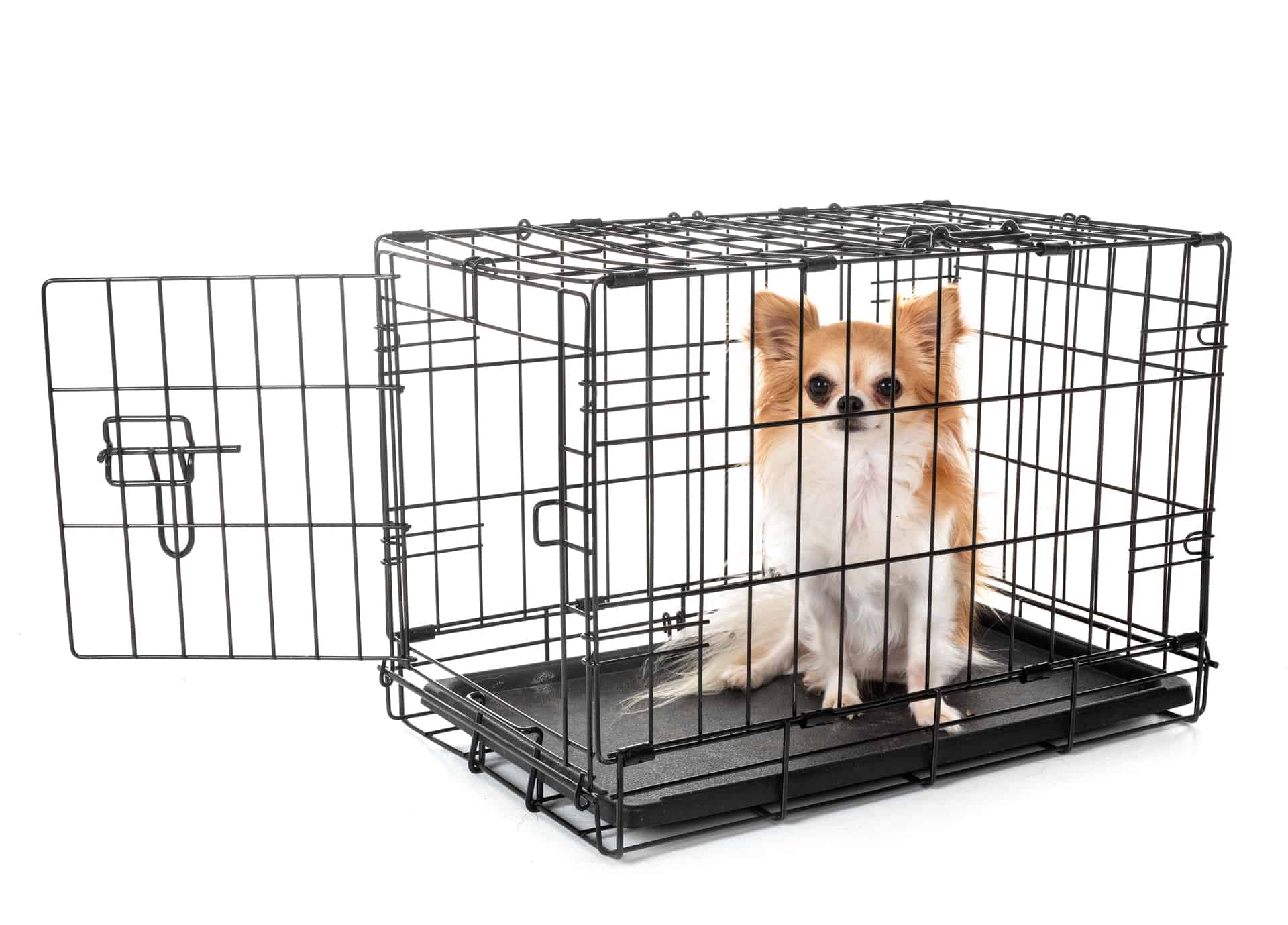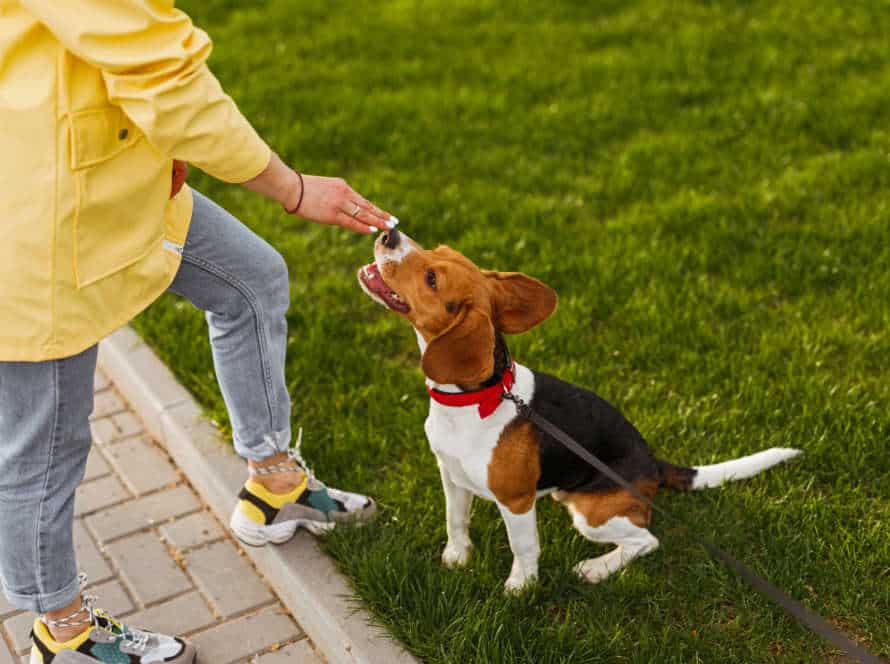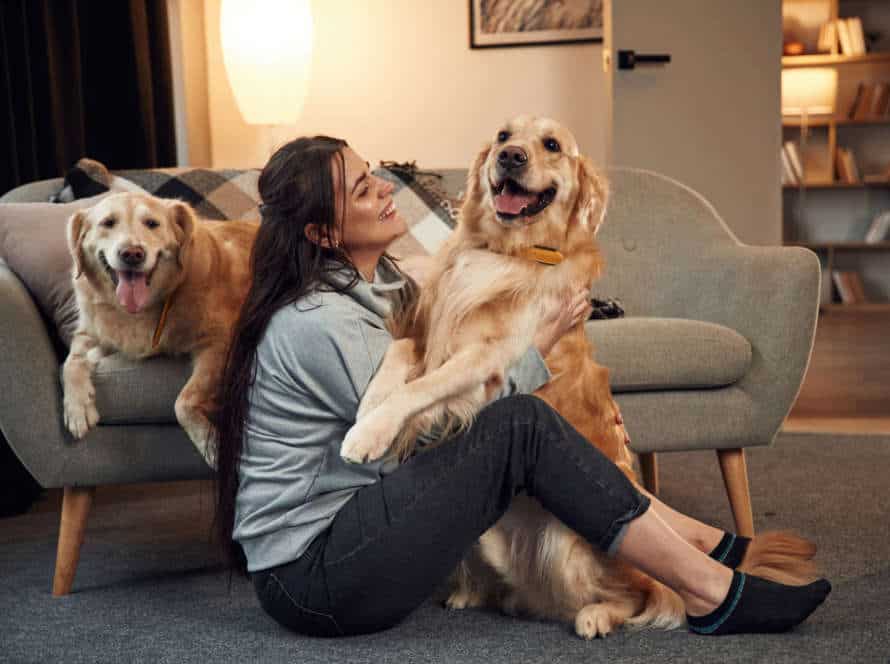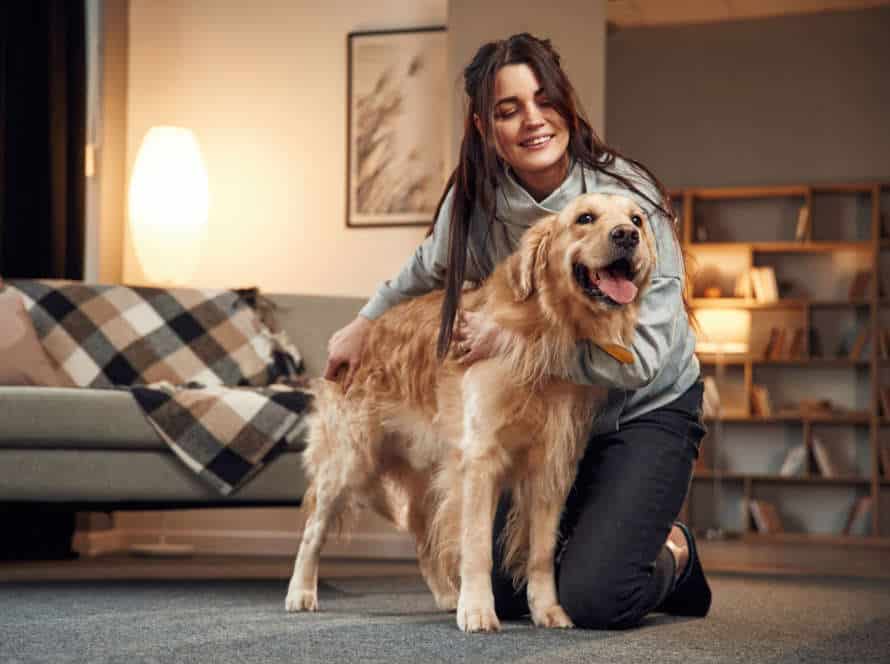Picking the Ideal Crate for Your Puppy’s Growth Stages
When buying a crate for your puppy, it is important to take their growth stages into account. Here are the ideal sizes:
- Small (18-22 inches) – great for pups up to 25lbs, like Chihuahuas and miniature poodles.
- Medium (28-30 inches) – great for breeds such as Cocker Spaniels and Bulldogs, weighing 25-50lbs.
- Large (36-42 inches) – ideal for Labradors and Golden Retrievers, between 50-90lbs.
- Extra Large (50-54 inches) – perfect for giant breeds such as Great Danes, Mastiffs and Saint Bernards, over 90lbs.
Remember, the crate should be big enough for the pup to stand up, lie down, and turn around easily. It’s best to buy a bigger crate and use dividers to reduce the size for their early stages – this way, you can avoid buying larger crates as they grow.
Factors to Consider When Choosing a Crate
Choosing the perfect crate for your pup? Think about: size, ventilation, and visibility.
Keep pup growth in mind. To pick the ideal crate, here are a few things to consider:
- Size – how much room will pup have?
- Ventilation – let pup breathe.
- Visibility – can pup see out?
All these things matter!
Your Puppy’s Size and Breed
When selecting a crate for your puppy, size and breed matter. Before buying, measure your pup’s height and weight. Think about their breed too, as some are more active and need more space. Get a crate that can handle their growth rate. Ensure it’s durable and can withstand their biting and scratching. Ventilation, bedding, and easy-to-access water is important for their comfort.
Remember to supervise when the pup is in their crate. That way, you can keep them safe and sound.
Your Puppy’s Age and Growth Stage
When picking a crate for your pup, consider their age and development stage. Pups grow fast, so getting the right size crate can save cash and ensure your puppy is relaxed and secure. Here are factors to think about:
- Age: Pups grow rapidly, so you’ll need to adjust the size of the crate as they age.
- Size: Choose a crate with enough space for the pup to stand up, turn and lay down easily. Not too big that they can potty in one end and sleep in the other.
- Growth Stage: Keep in mind their growth stage when choosing the size of the crate. For example, a small breed pup may be fully grown at 6 months, but a larger breed may still grow for up to 18 months.
- Material: Must be sturdy, simple to clean and safe for your pup.
- Comfort: Consider adding a soft bed or blanket for them to feel secure in the new environment.
Remember, pups grow quickly, so pick a crate that can accommodate these changes.
Your Puppy’s Activity Level and Energy Requirements
It’s vital to consider your pup’s energy requirements and activity level before picking a perfect crate for their growth. The size and space of the crate rely on their energy level and activity needs. For instance, energetic and active puppies need a larger crate with more room to play and exercise. Whereas, low-energy pups need a cosy crate with less space for comfort.
Also, think about their weight, height, and breed when choosing a crate as this affects their mobility and comfort within the crate. Opt for a durable, sturdy, and well-ventilated crate which is easy to clean.
Monitor your pup’s energy needs and activity level to find the right crate; this will ensure their comfort and create a healthy environment for them to grow.
Pro tip: Place interactive toys and puzzles in their crate to keep them entertained and mentally active while in the crate.
Types of Crates Available for Puppies
Tons of crates exist to fit your puppy’s age phases. They come in a myriad of shapes, sizes, materials, and colors. Need something lightweight? Or stronger? You have many crates to pick from. In this article, we’ll review the various types of crates and their advantages and disadvantages.
Wire Crates
Wire crates are a great option for puppy owners. They offer durability, ventilation and visibility. Three types are available. Pick the right one for your pup’s growth stages.
- Fixed wire crates: These are strong and heavy. They can’t be folded. Perfect for pups that outgrew their small crate and need more room.
- Foldable wire crates: Lightweight and easy to store or move. It has a detachable tray for cleaning. Suitable for puppies growing.
- Soft-sided wire crates: Collapsible and made of soft fabric. Great for tiny puppies, or temporary crates. Easy to carry but not as strong as other types.
Be sure to choose the right size crate for your puppy. Too small is uncomfortable. Too big may lead to bad habits.
Plastic Crates
Plastic crates for puppies are very popular. It is important to pick the perfect one for your pup’s growth. Here are the kinds of plastic crates:
- Hard-sided – Durable and easy to clean. Great for air travel.
- Soft-sided – Lightweight and simple to transport. Not as tough as hard-sided ones, though.
- Heavy-duty – Incredibly durable and long-lasting. Great for aggressive chewers and offers good ventilation.
Choose the right size crate for your pup’s growth stages. Too big or too small can be uncomfortable and make them anxious. Buy an adjustable one that grows with your puppy. Tip: Don’t forget bedding for extra comfort in the crate.
Soft-Sided Crates
Soft-sided crates are a great option for puppies because they are portable and easy to use. But, there are other types of crates you should know about.
- Wire crates are strong, roomy and let air in. They’re great for puppies still growing and can fit different sizes.
- Plastic crates are light, tough and easy to clean. They work well for anxious puppies as they give them a sense of safety.
- Collapsible crates are perfect when you need something transportable or temporary. They work best for puppies already used to crates.
- Furniture-style crates blend in with your home décor and provide a comfy spot for adult dogs not needing intense training.
Remember that puppies grow quickly, so invest in a larger crate to allow for growth. Choose the crate that suits your puppy’s size, temperament and growth stage.
Features to Look for in a Puppy Crate
Pick the top crate for your pup! It’s an essential decision. Dog crates give them their own spot and a secure atmosphere. Plus, they aid with house training! Here’s what to look for when buying a crate:
Important features:
Safety Features
Ensure your puppy’s comfort and security whilst you’re away with a secure puppy crate. Important safety features to consider include:
- Secure locks to stop the puppy pushing open doors or escaping.
- Sturdy construction to protect the puppy from accidents.
- Smooth surfaces to avoid injury.
- Appropriate size – not too small or too big – to accommodate growth stages.
Durability and Strength
Durability and strength are must-haves when picking a crate for your pup’s growing stages. It’s a key piece of equipment to keep them safe and secure. Here are the features to look for:
- Material: Get a metal or heavy-duty plastic crate. Avoid soft or lightweight ones.
- Size: Buy a size that fits their current and adult size. Room to stand, stretch, and turn around? Check!
- Safety features: Secure doors and locks to stop escapes/injuries.
- Cleaning: Easy to clean and maintain. Removable floor trays and washable materials.
- Pro tip: Invest in quality from the start; it’ll save you money and keep your pup safe!
Portability and Storage
Puppy crates need to be portable and have storage options. Here’s what to consider when picking the perfect crate:
- Portability: Look for light, portable models with handles, collapsible designs, and wheels, if you plan to travel with your pup or move the crate often.
- Storage: Choose a compact, foldable design that won’t take up much space. Some crates come with a storage bag, which makes it easy to store.
- Size, material, and safety features should also be taken into account, for your pup’s growth stages. A safe, comfortable, and secure crate environment can enhance your pup’s well-being and training.
How to Size a Crate for Your Puppy
Crate training is essential for your pup’s development. Selecting the right-sized crate is a must, to give them a secure space. Too small, and they won’t have enough room to move. Too large, and they will have too much freedom, which can slow down potty training. Make sure to pick the correct crate size for your puppy’s growth stages.
Measuring Your Puppy for a Crate
Choosing the right size crate for your puppy is important. Here’s how:
- Measure the tip of their nose to the base of their tail. Add 2-4 inches to this.
- Then measure from the floor to their tallest point. Again, add 2-4 inches.
- Choose a crate that’s not too big. Puppies like snug spaces. If it’s for a puppy to grow into, add a divider panel.
- Remember, puppies grow quickly. You may need to upgrade in a few months.
Pro tip: The crate should be large enough for them to stand, lie down and turn around comfortably. Toys and bedding should also be provided for their comfort.
Calculating the Right Size Crate for Your Puppy
Sizing a crate for your puppy is essential for their safety, comfort, and overall well-being. Here’s how:
- Consider the pup’s eventual size and breed.
- Use a measuring tape to get their height, length, and weight right now.
- Add 2-4 inches to their height and length to give them room to move.
- Choose a crate that’s sturdy, well-ventilated, and big enough for them to stand up, lie down, and turn around.
- Get a divider to adjust the size as your pup grows.
As your pup grows, adjust the size of the crate with the divider. This keeps ’em comfy and secure!
Adjusting the Crate as Your Puppy Grows
Choosing a crate size for your pup is essential. As your pup grows, you must adjust the crate size too. When selecting the right size, take into account the adult size of your pup’s breed. Add a few extra inches for comfort. Monitor your pup’s size and behavior regularly.
Here are your steps:
- Measure your pup from nose to tail and the ground to the top of their head.
- Add a few inches to each measurement.
- Get a crate with adjustable panels, so you can expand it as your pup grows.
- Move the panels to fit your pup’s size, not too cramped or spacious.
- Give your pup toys, bed, water and food in the crate. That way, they’ll stay happy and comfy.
Training Your Puppy to Use a Crate
Crate training is a must when bringing home a puppy! It’s essential for housebreaking, and teaching boundaries. Both pup and owners benefit from it. The pup feels safe and secure, while owners get a place of rest for their puppy. Evaluate the pup’s size and needs to pick the right crate.
Introducing Your Puppy to the Crate
Introducing your pup to their crate is very important. Here’s how:
- Pick the right size crate for your pup’s age and estimated adult size. It should be just big enough for them to stand, turn, and lie down comfortably. Not too big, as it shouldn’t be a bathroom!
- Make it comfy with bedding and toys.
- Get them in there by placing a treat or toy inside. Don’t force them.
- Praise and reward them with a treat or words when they go in.
- Slowly increase the time in the crate, until it’s 30 minutes or more.
Remember, crate training must be done gradually. Never use it as punishment.
Creating a Positive Association with the Crate
A crate can be great for training your pup! Here are some tips to make sure they use it willingly:
- Introduce it slowly. Leave the door open and put treats and toys inside.
- Make it comfy. Add a soft blanket or cushion.
- Give positive experiences while in it. Feed or give toys.
- Don’t punish with it. This can lead to bad associations.
- Pick the right size. Your pup needs enough room to move.
Follow these steps and get an ideal crate size – then your pup will love their crate and it’ll be a key tool for successful training.
Gradually Increasing the Time Spent in the Crate.
Train a pup to use a crate? Essential! Gradually increase time spent in the crate. Rushing will lead to anxiety and refusal. Here’s how:
- Introduce pup to the crate in a positive way. Let them explore and give treats & toys.
- Have short 10-15 min. sessions while you’re present.
- Increase time spent in crate by a few mins each day.
- Monitor pup’s behavior. Don’t leave in too long – this causes distress.
- Make sure crate is comfy w/ enough space to stand, turn & lie down.
- Adjust size of crate as pup grows.
Frequently Asked Questions
Q: What size crate should I get for my puppy?
A: The size of the crate you should get for your puppy will depend on its current size and anticipated adult size. You want to get a crate that is big enough for your puppy to stand up, turn around, and lie down comfortably, but not so big that they have enough room to use one section as a bathroom and the other section to sleep.
Q: Do I need to upgrade to a larger crate as my puppy grows?
A: It is recommended to upgrade to a larger crate as your puppy grows. This is especially important if you got a crate that is meant for your puppy’s current size. You want to make sure your puppy has enough room to move around and be comfortable in their crate.
Q: Can I use a soft-sided crate for my puppy?
A: Soft-sided crates can be used for puppies, but they are not recommended for puppies that are still in the chewing phase. Puppies who like to chew can quickly rip the mesh or fabric and escape the crate, putting them in danger.
Q: How do I introduce my puppy to their new crate?
A: Introduce your puppy to their new crate gradually. Start by placing a familiar toy or blanket inside, and let them explore it at their own pace. Once they are comfortable, coax them in with a treat and praise them when they go inside. Slowly increase the amount of time they spend in the crate, and always use positive reinforcement.
Q: Should I cover my puppy’s crate?
A: It is a personal preference whether or not to cover your puppy’s crate. Some puppies like to have a covered, den-like space, while others prefer to have a more open space. If you do choose to cover your puppy’s crate, make sure there is enough ventilation and that the cover is not too tight or too heavy.
Q: How long can my puppy stay in their crate?
A: The length of time your puppy can stay in their crate will depend on their age, bladder control, and activity level. As a general rule, puppies younger than 6 months should not be left in their crate for more than 4 hours at a time. For older puppies and adult dogs, you can gradually increase the amount of time they spend in their crate, up to 8 hours per day.







